Muscleman Tree-ant - Podomyrma gratiosa
Subfamily Myrmicinae
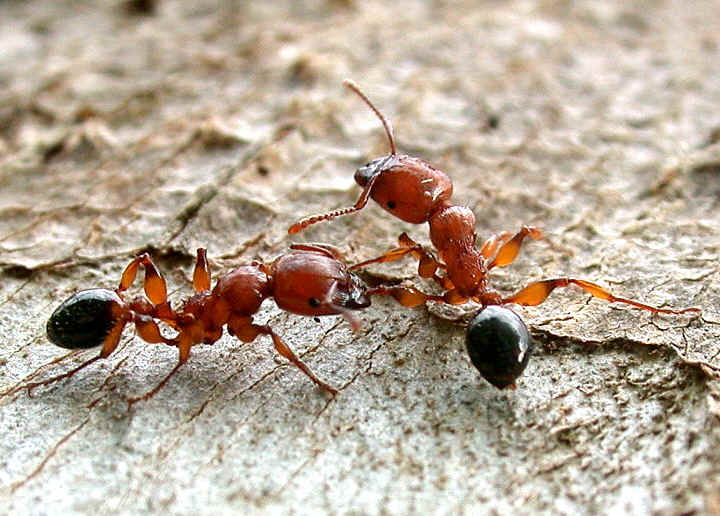
We
found some ants had caught a bug just in front of their nest entry. It looks
like the bug had landed in wrong place and gave the ants an easy meal.
The bug could a Dark Clown Bug.
The ants were 10-12 mm in length with a brown body and black abdomen.

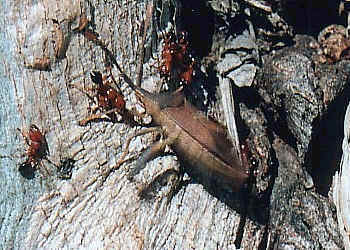
The bug had tried to escape but was held tightly by the ants. A few minutes later, about ten
more ants came and each held the legs and antenna of the bug.

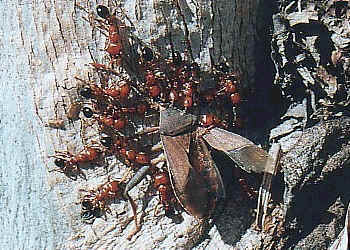
More and more ants came to help. Some ants started to climb on the bug's
body and bite off its wings. I think this is to prevent its escape.

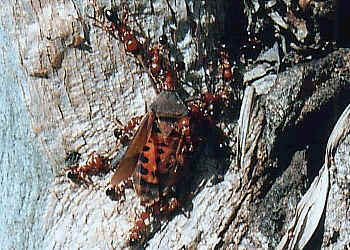
I came back an hour later. The legs, wings and head of the bug were
removed. The ants were trying to move the bug body into their nest. I checked the
body and cannot smell the stink from the bug, which it would usually released to
expel its predators. I could only feel the strong smell of acid which I think was
released by the ants to kill the bug.


After the bug's wings were removed, we can see the top pattern of the bug. It is the eye catching pattern with bright orange and black colours. It is the warning pattern to tell the predators, such as birds, that 'I am a distasteful stink bug'. It obviously did not work on ants.


- Body Length 10 and 12mm
- The ants are reddish brown in colour, with a black abdomen and strong
mandibles.
They have three pairs of strong legs. They
are easily recognized for their spiny shoulders and swollen upper arms on
their three pairs of legs.
- I found they have at least two body sizes: most of them are 10mm, but a few are 12mm in length. I found only one group of them. They build their nest in the tree hole of a living gum tree, about one meter above the ground. We do not see another nest of the same species near by.
In ant's world, numbers are important.

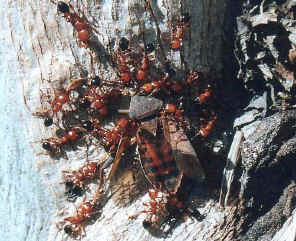
- The nest entry.
- I visit them from time to time and find that they are also active in winter although their numbers in winter are fewer than their numbers in summer. We found the ants foraging on tree trunks and around the ground near the tree. These ants move slower compared to other ant species.

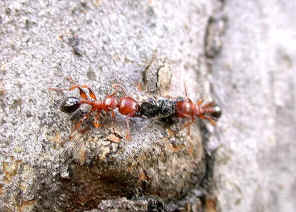
- I saw once those ants gather around a Native Stingless Bee nest, waiting for returning home bee lands near them and attack the bee.
- Reference and Link:
- 1. Insects of Australia and New Zealand - R. J. Tillyard, Angus & Robertson, Ltd, Sydney, 1926, p288.
- 2. Podomyrma - myrmecos.net, 2005.

